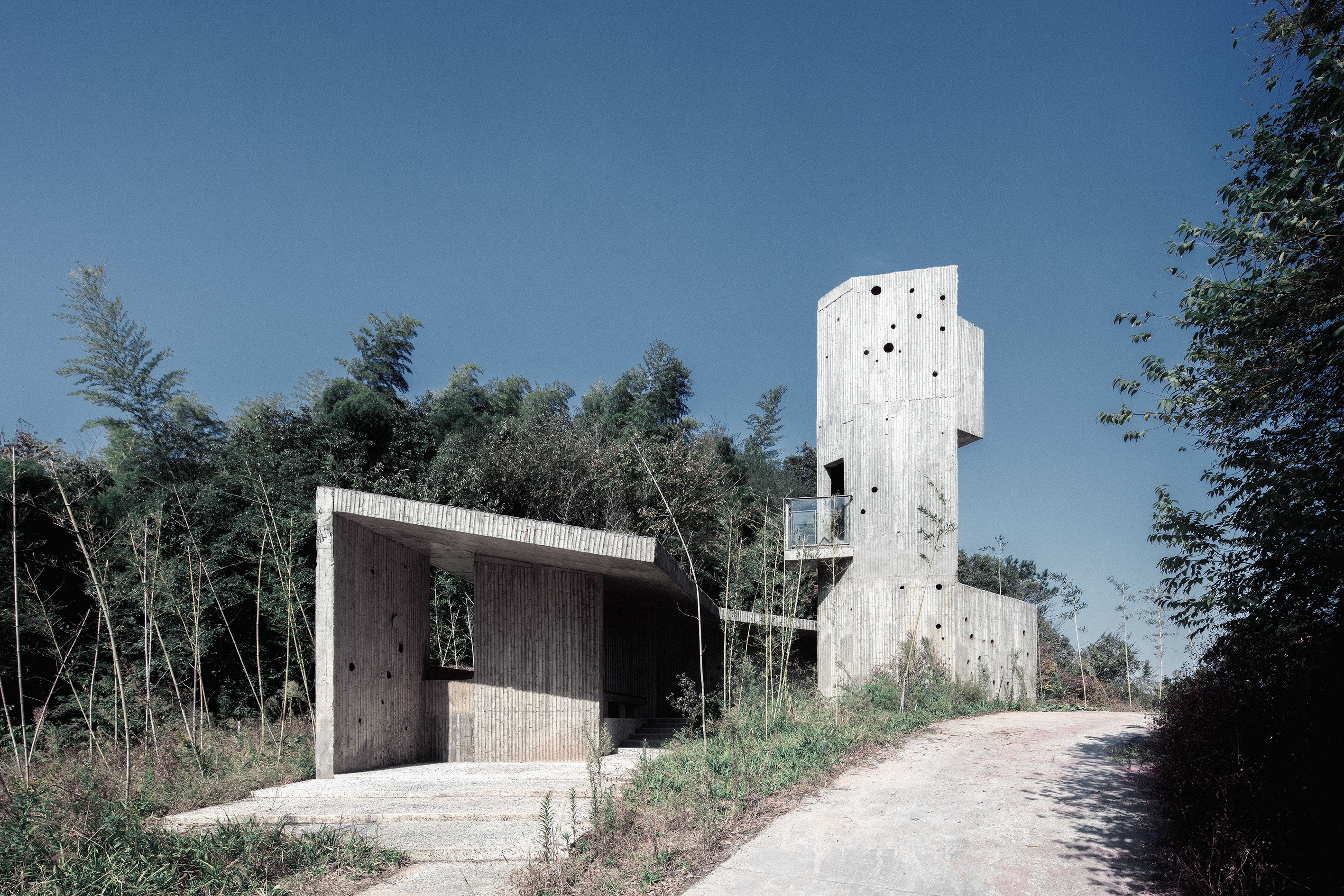
设计单位 跳房子建筑工作室
项目地点 浙江绍兴
建成时间 2021年11月
建筑面积 90平方米
本文文字由设计单位提供。
01
可远望的驿站
建筑在群山之中,位于一段自行车骑行道的最高点,是一处骑行者休息的驿站。此处向北视野开阔,但在人的高度视线受到植被干扰,所以我们想设计一个可以登高远望的驿站。我们设想骑行者经历了漫长的骑行路线之后,进入驿站,先进入一段游廊,可以在游廊的起点停放自行车、休息;有好奇心或者厌倦了骑行单一流线的人们还可以继续往里探索,在游廊的尽端盘旋而上,登顶远眺群山。
Sitting in the mountains, the building is a rest station for bikers that is located at the highest spot of a cycle track. Towards the north there is potentially a broad, open view, which is currently blocked by trees at eye height, so we hoped to create a rest station that visitors could ascend and enjoy the vista. We have imagined how bikers will arrive at the rest station after a long ride: first they will enter a corridor, parking their bikes at the entrance, and taking a break. For those with more curiosity or finding the cycle track tedious, they can explore further into the corridor that spiralling up to the top of the mountain, where they can enjoy a splendid vista of the surrounding mountains.
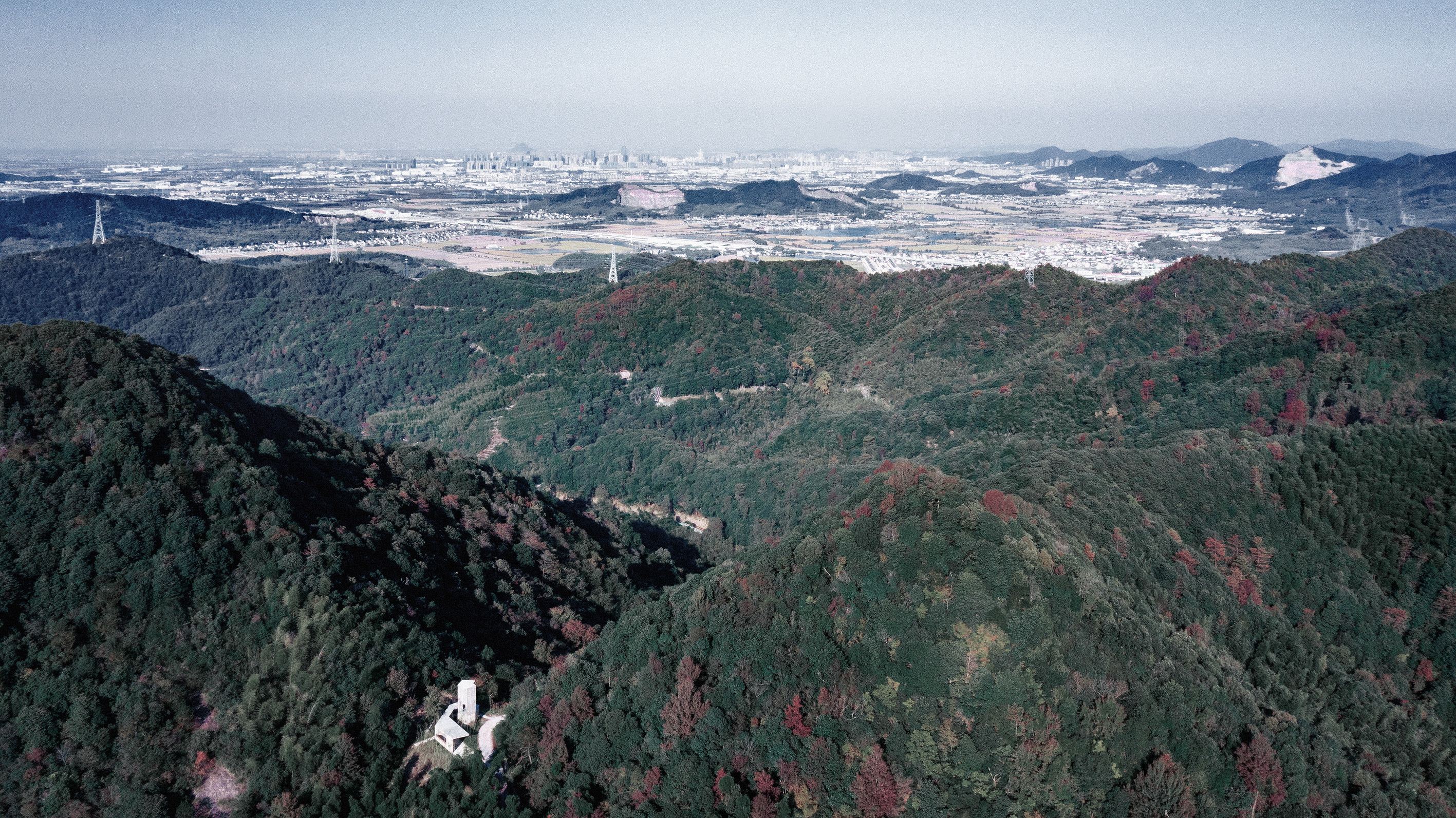

02
一段折廊一座塔
休息可能需要一段廊子,登高可能需要一座塔,场地地形接近半圆形,我们顺应地形设计了一座将两者结合的建筑,游廊环绕着高塔,随着地形转折地面缓缓抬升,经过五次转折,进入高塔。
A corridor can be a space for rest, and a tower will allow an ascending experience; accommodating to the semi-circular site, we combined the two elements in our proposal: the corridor encircles the tower, twisting and heaving up and down with the terrain, and connects with the tower after five turns.
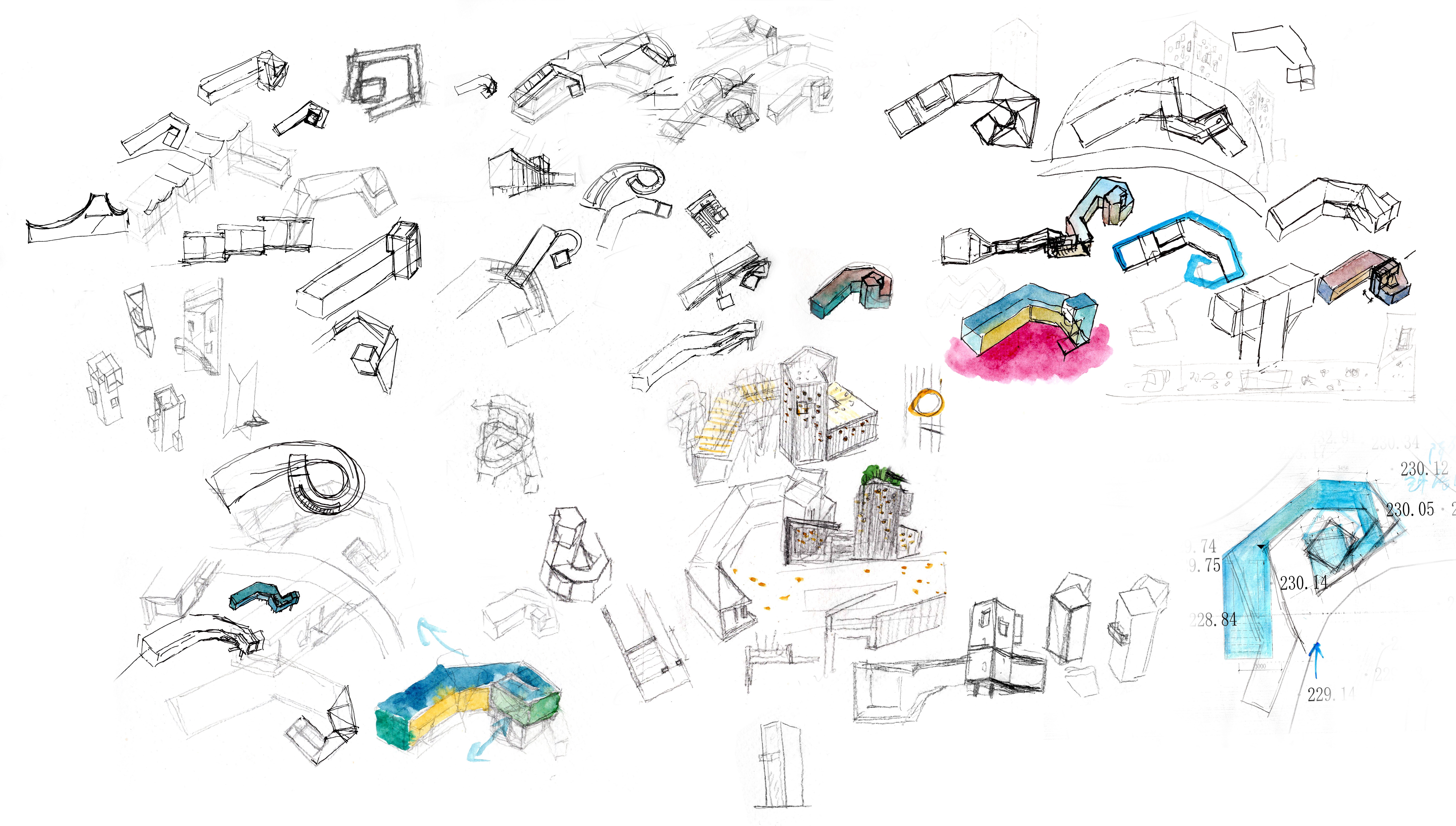
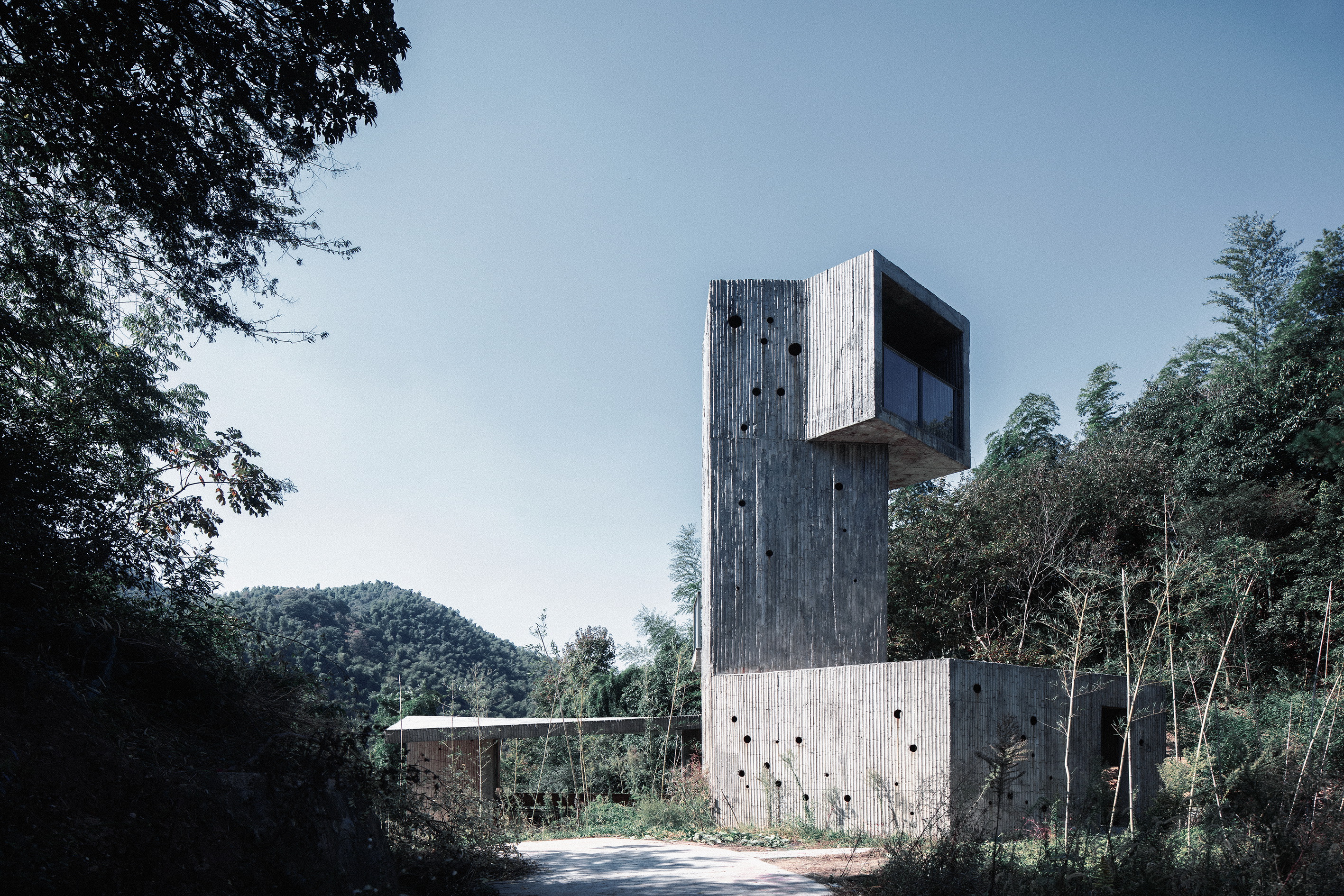
为了让这条线性流线的体验感不至于单一,在这段旅程中我们希望通过处理空间的大小、高低、转折、明暗来丰富游客的体验感,随着每一次转折,空间的气氛也会有转变:自南向北是骑行的主要方向,因而主入口设在南侧,进入建筑的步道与骑行道形成23度的夹角,从骑行道进入建筑,停好车,上几级缓缓的台阶,是宽敞的休息亭,开敞通透。
To ensure such moving experience does not feel long and monotonous, we involved variations in the size, height, direction, and brightness of the space: each turn along the way indicates a shift in the space’s character: bikers mainly come from the south to the north, and hence the main entrance has been arranged in the south side of the building, with the walking path leading to the entrance forming a 23° angle with the cycle track; when a biker rides along the cycle track into the corridor, parks their bike, and climbs a few gentle steps, they entered an open, spacious rest area;

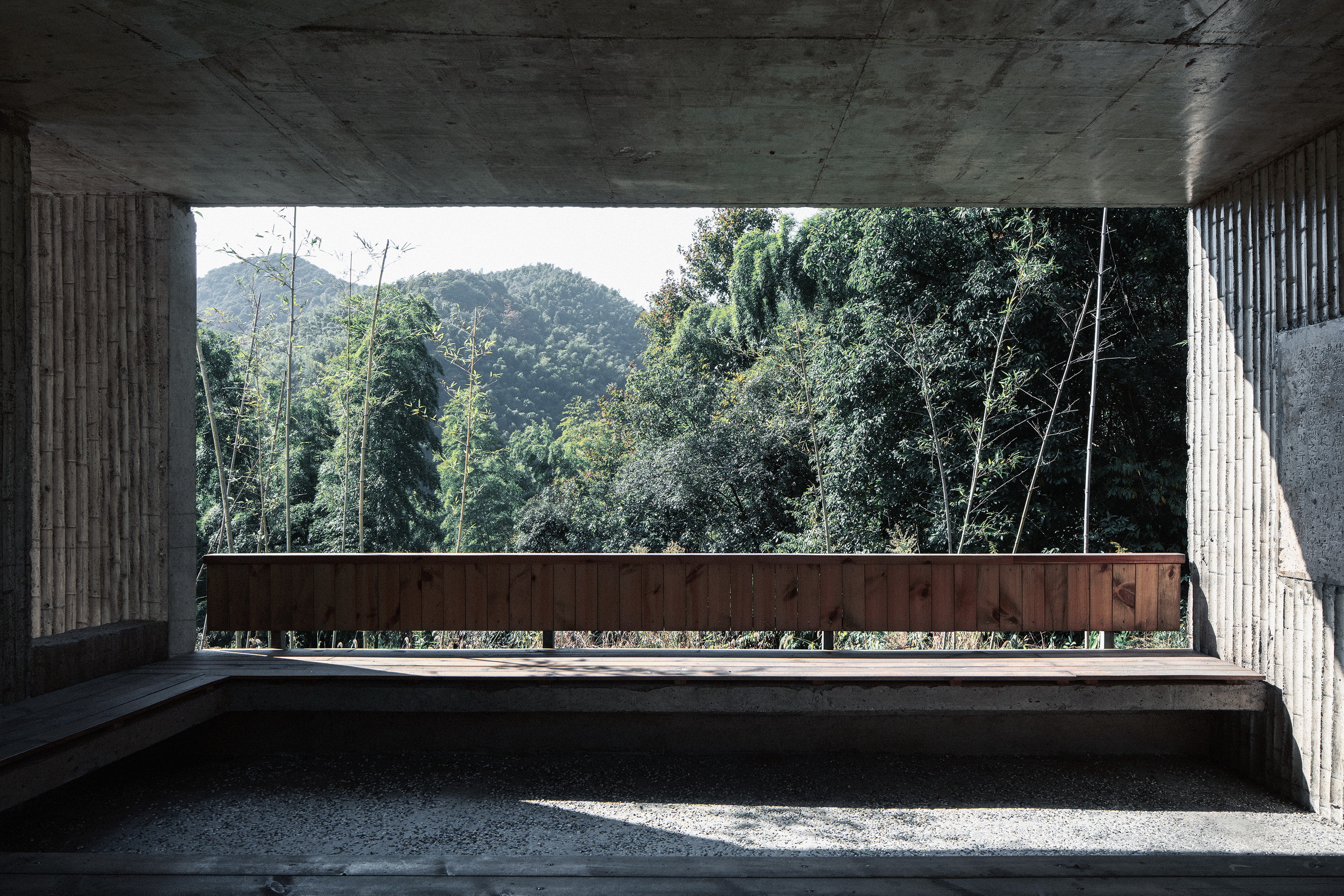
一次转折后,室内变成了一道窄窄的缓坡连廊;再一折,又变成了一处私密的庭院;再往里,折廊指向神秘的幽暗入口,吸引人进去;进入之后便是通往塔顶的楼梯,塔有7米高,在中段我们设置了一个一人站的小阳台,让光进来也提供了一个往南远眺的视角;登顶之后,开口方向朝着视野最好的方向。
After the first turn, the space transforms into a narrow corridor that gently goes up with the terrain; Connecting to an intimate courtyard right after the second turn; Further up, the corridor leads the visitor to a dark, intriguing entrance that invites the visitor to the tower; What they will see next are the stairs that lead to the top of the seven-metre high tower, halfway the stairs is a tiny balcony which is just big enough for one person to stay – it lets in natural light and opens up a view towards the south; When the visitor reaches the top, the space opens up towards the best view.
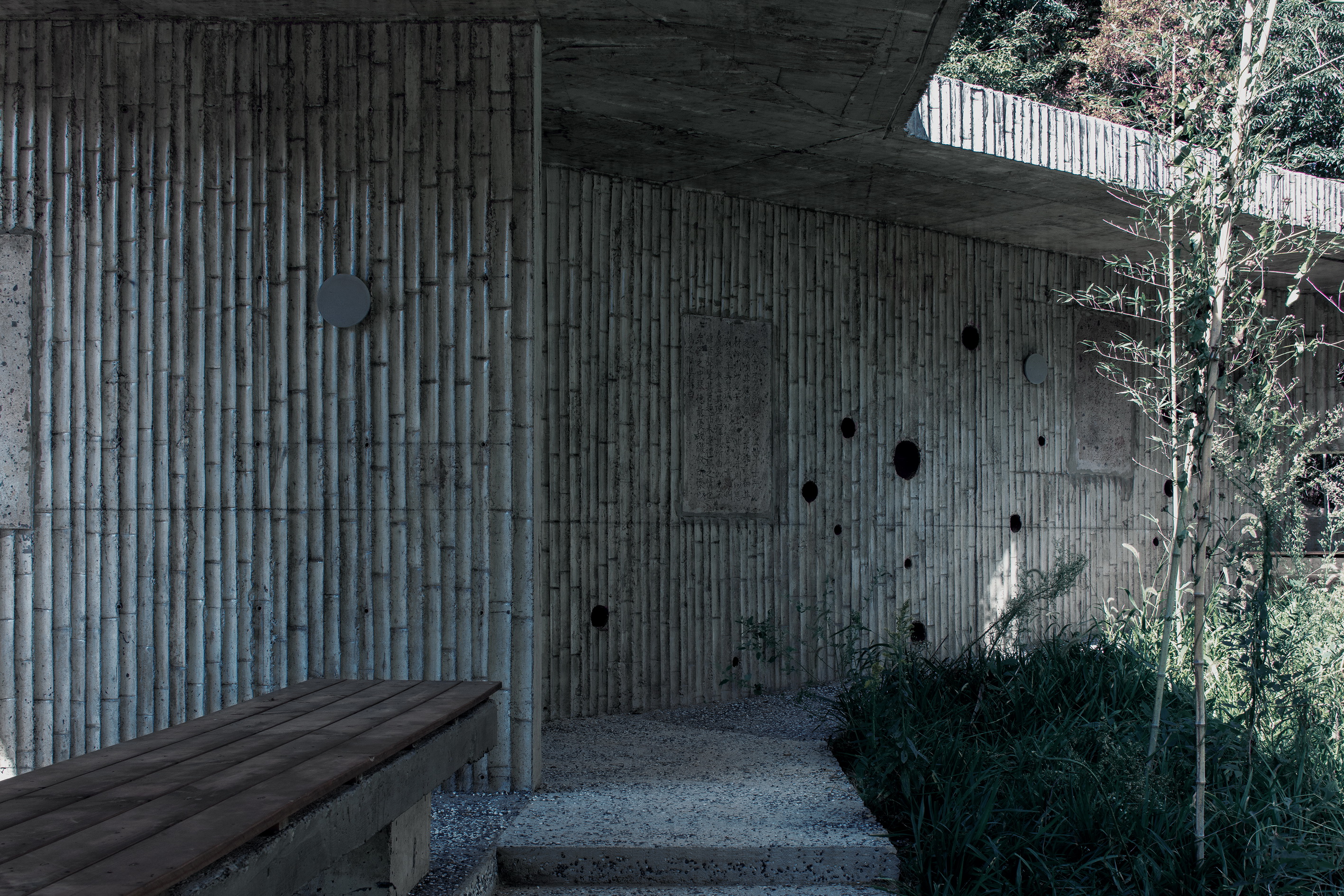
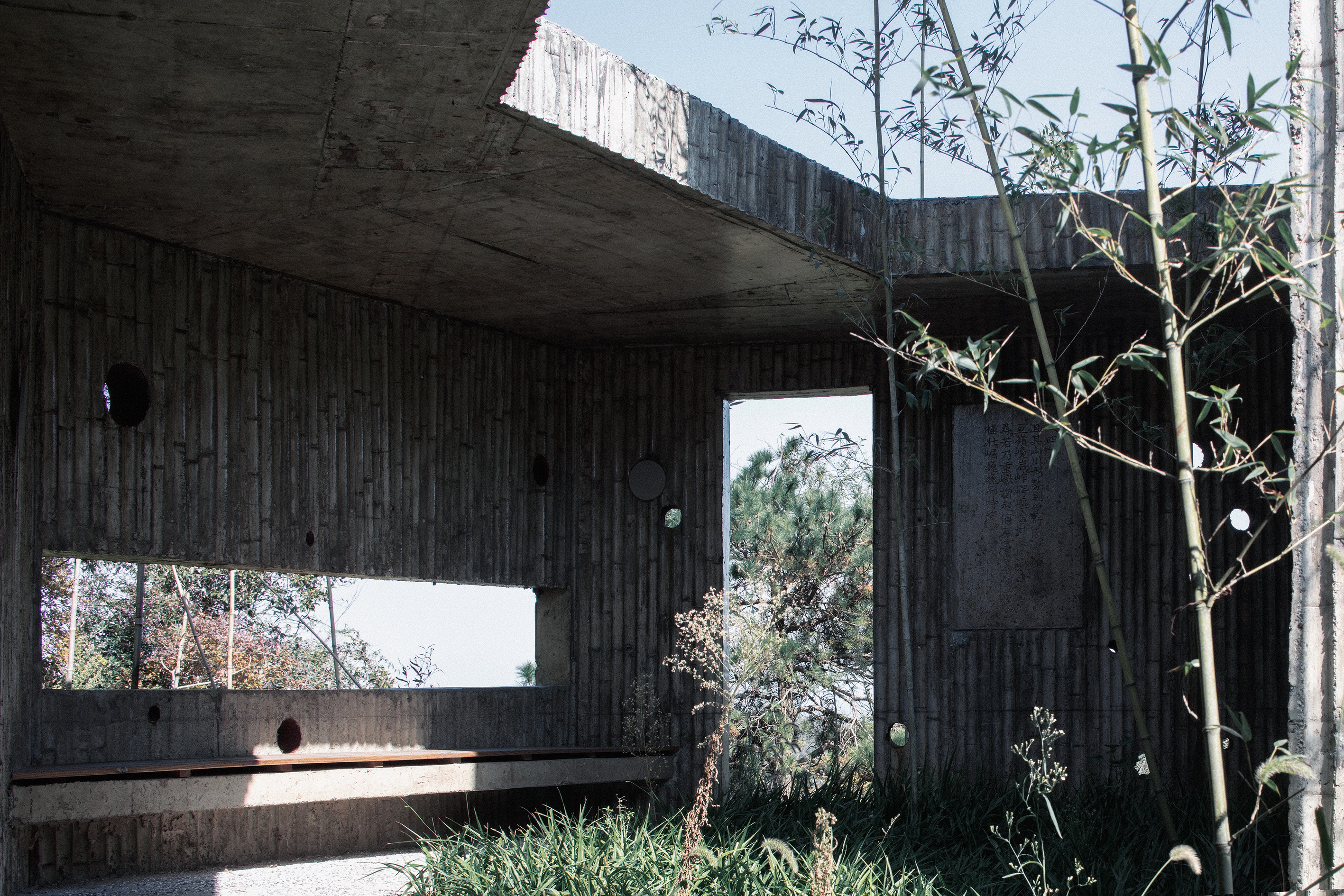
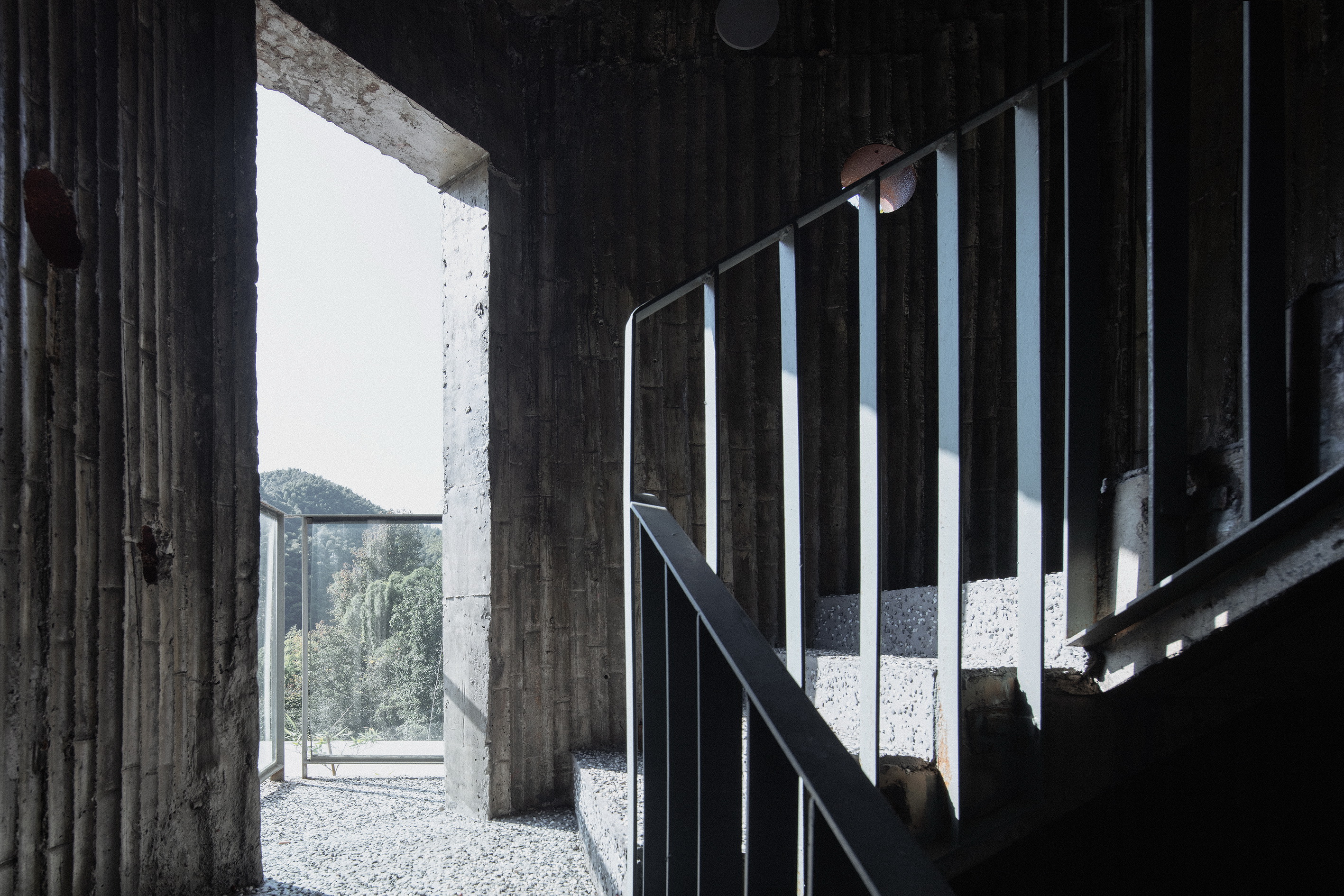

另外,在这条线性流线上我们还设置了两处次入口,让线性的流线中出现了分岔,让游客有更多的选择,它们分别与场地中的步行山道以及北侧骑行道相连。
Besides, we arranged two secondary entrances along the linear route, so that it branches and connects with a walking path on site and the north section of the cycle track respectively, offering visitors more options of how they would explore.


03
粗砺感和过于粗砺
第一次到现场时,山风挺大,前后不靠,我们直觉这里应该有一座厚重如山石的建筑,像是长在山顶,内部会有类似洞穴的质感和体验。于是一开始我们就想到用肌理混凝土作为建筑的主材,之所以选竹子做模板,除了因为周边多是竹林便于取材、容易获得甲方的文化认同之外,还因为竹模比木模更随机、肌理凹凸更重、更有粗砺感。
We inspected the lofty site on a gusty day, and our impression of it was a sense of aloofness. Hence, we intuitively arrived at the conclusion that we should build something solid as a rock that roots in the mountain top, and the texture and experiential quality of the internal space would remind visitors of a cave. Naturally, we decided to use textured concrete as the main material, and the choice of bamboo formwork was not only a result of the material’s easy availability and the client’s readiness to culturally identify with it, but also because the texture created by bamboo formwork is more random and obvious, - a truly raw effect.
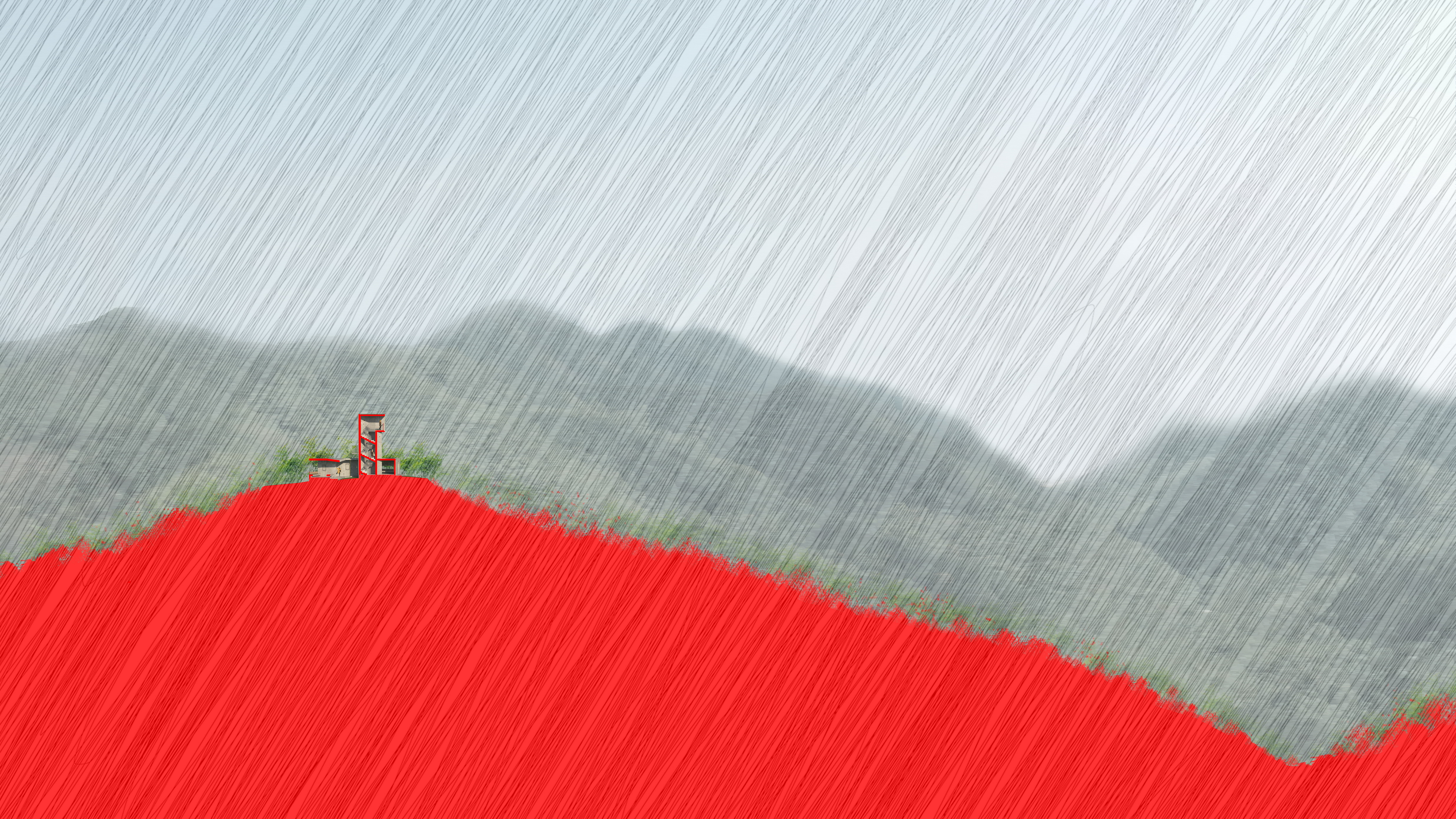
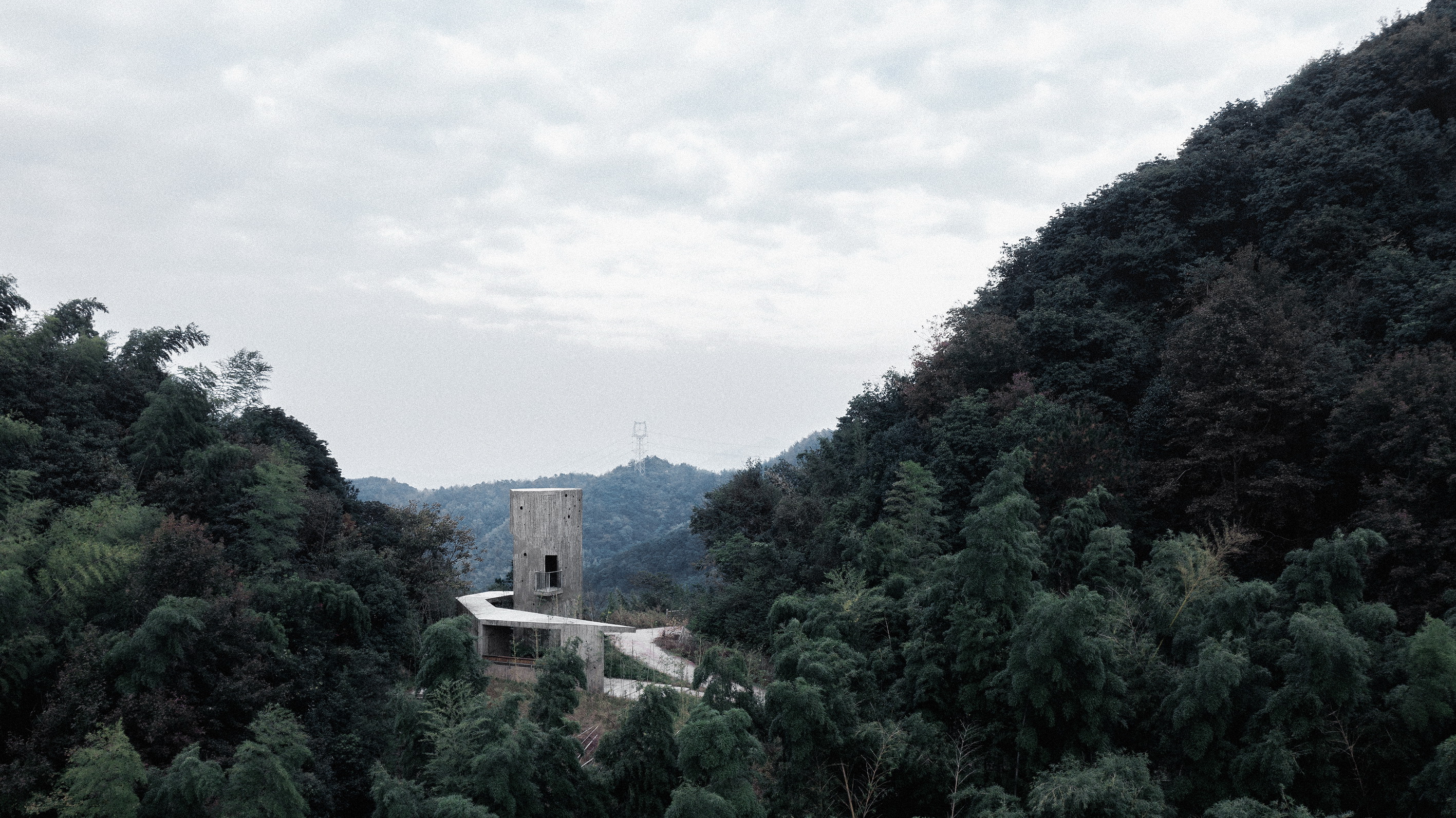
就像绘画中会有意保留绘画痕迹来凸显绘画的生动性,竹模混凝土直接呈现了混凝土由液体凝固成固体的过程,叠加上竹子竹节天然的错动和宽窄差异,是一种充满建造痕迹也因此充满变化的材料,这应该也是很多建筑师会选择它的原因。对于这个建筑来说,竹模混凝土的随机性、编织感以及深刻的凹凸感,很符合我们想象中的粗砺感。然而恰如其分的粗砺感并不好把握,最终呈现的粗砺感远超过想象中的,有点过于粗砺了。在施工过程中,施工方和监理方对这个小建筑都挺用心,但有些客观原因还是不好克服。
Just as the traces of strokes render a painting more vivid, bamboo formwork concrete directly records and presents the process how wet concrete hardens with time; with the naturally staggered nodes and varied widths, bamboo’s effect bears traces of construction and displays varied texture, which is why many architects like it. For this project, bamboo formwork’s randomness, woven texture and imprinted grooves is consistent with our perception of rawness. But the result turned out to be way too rough rather than ‘raw’ as expected. It was challenging to achieve the rawness to a nicety.
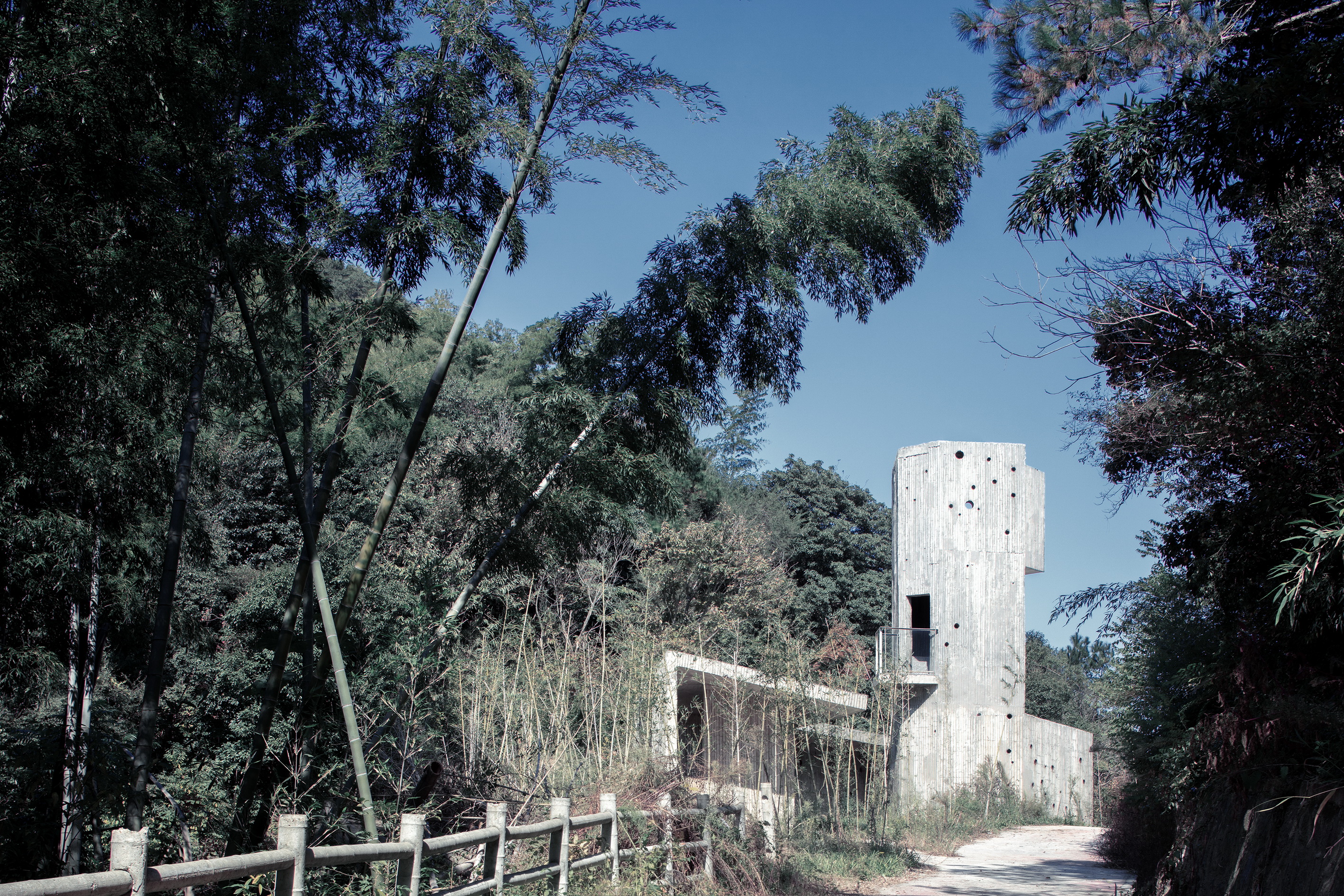
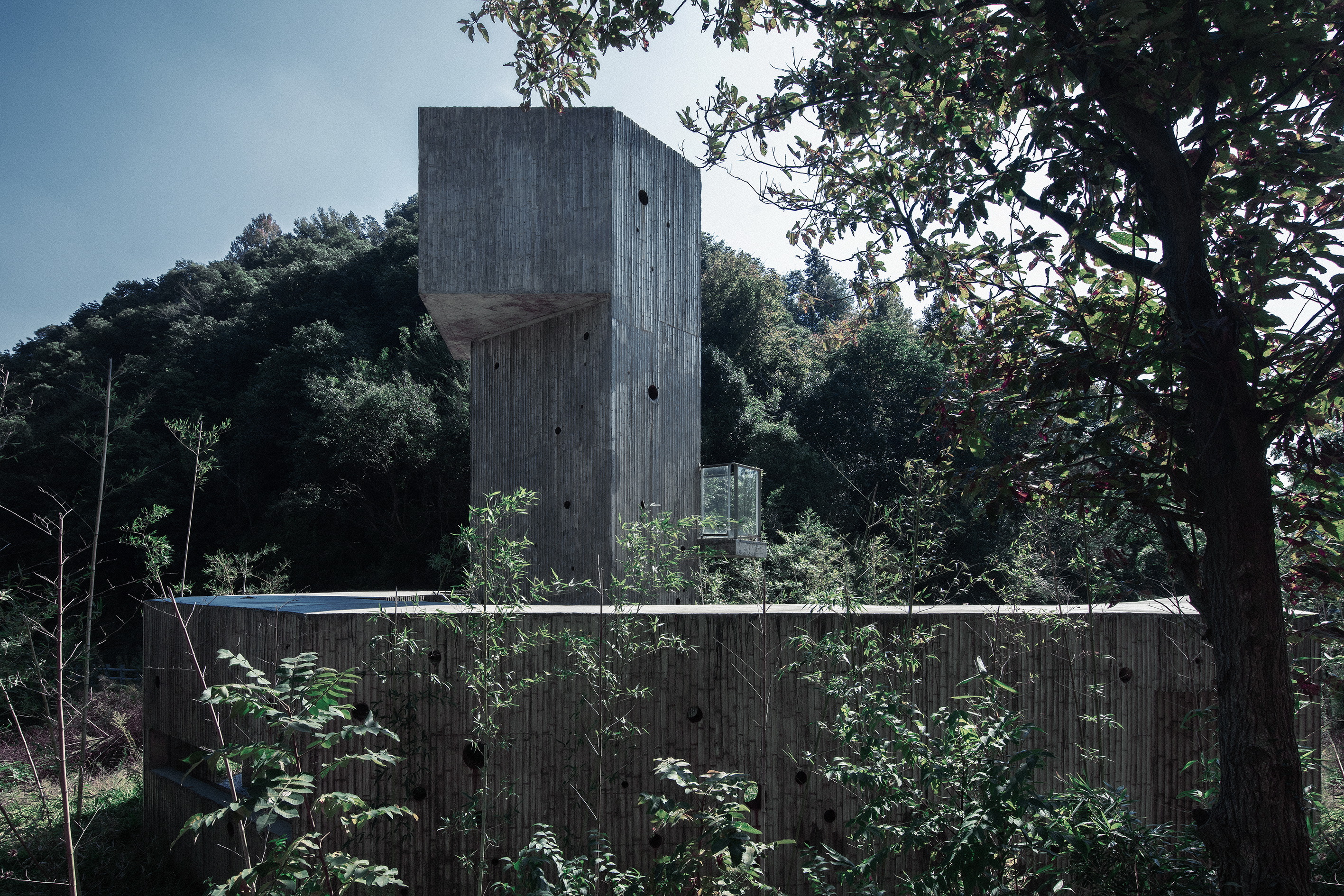
由于山路过窄,混凝土搅拌车和浇灌车都无法开进现场,所以只能现场搅拌人工浇灌,还因为工期、造价的原因,原本计划分三段浇筑改成了分两段浇筑,所以完成后出现了局部的发泡及肌理不完整现象。出于完整性的考虑,施工方用水泥浆填补了“不完美”之处,让立面出现了多处“补疤”,而在我们看来,自然的肌理缺陷要好过刻意修补,略有遗憾。希望未来我们种在建筑周边的爬山虎能慢慢爬上墙壁,让驿站更像一块长于此处的通透山石。
Both the construction team and the site manager have put great effort into this small project, but some objective obstacles were just too challenging. For one thing, the road to the construction site was too narrow for either a concrete mixer truck or a pump truck, so mixing and casting concrete were both carried out manually; for another, the original plan was to complete casting in three sections, while in the end it was conducted in two sections due to limited time and budget. Inevitably, localised puffing and incomplete texture occurred after the casting was done. The construction company decided to fix these ‘flaws’ with cement, resulting in some ‘scars’ on the exterior walls, which was a little disappointing to us because we preferred defects that truthfully reflected the construction process to covering them up. We planted some Boston ivy vines around the building and hopefully they will climb up the wall in the near future – with such a green coat the building will be more like a mountain rock emerging from the site.
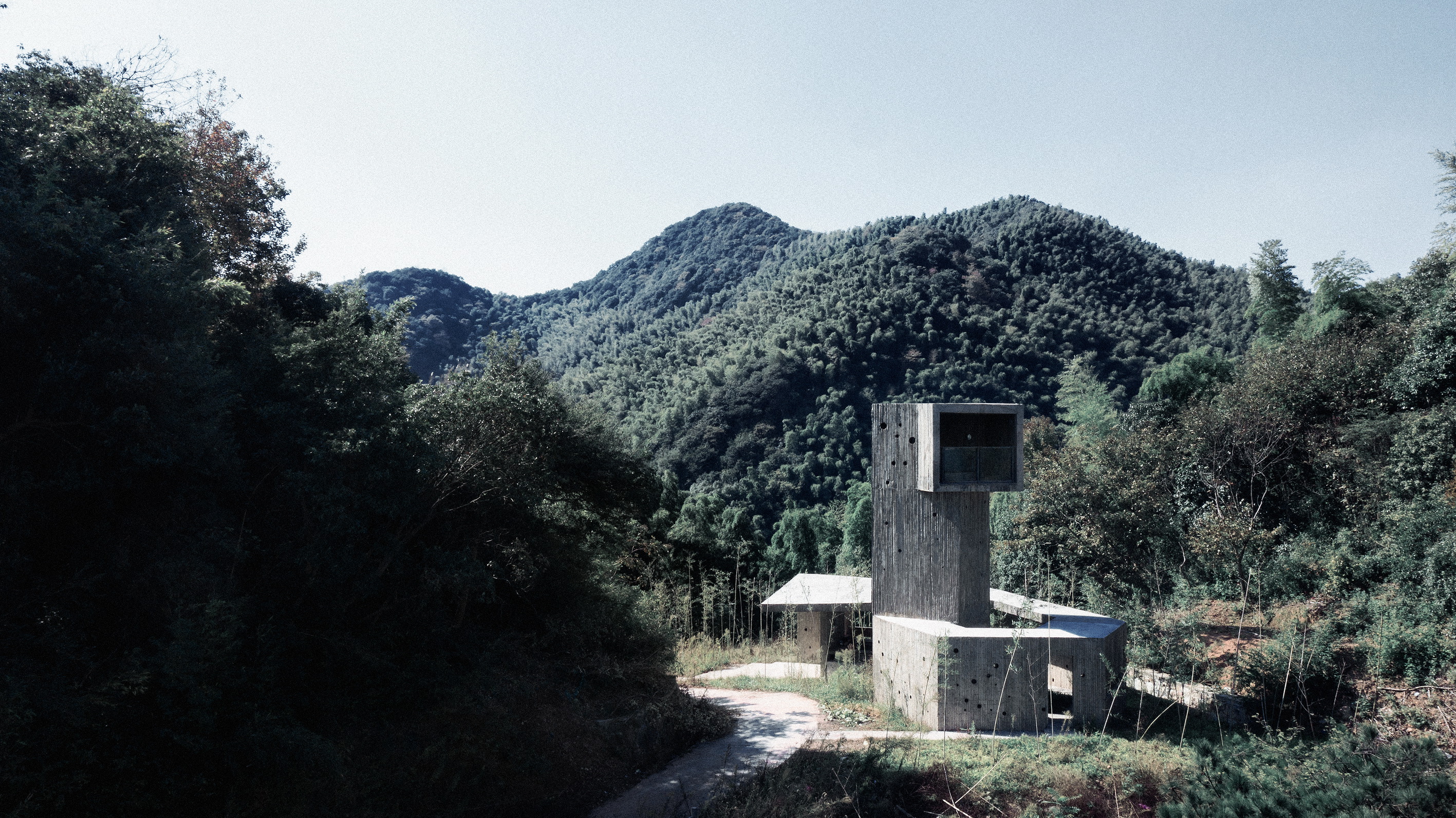
04
洞口
如何让一座厚重粗砺的建筑同时又有通透感,我们开了三个特定的大窗洞:一个在主入口处的休息亭,面向竹林完全打开;一个开在庭院位置的休息处,是一个扁长形的窗洞,符合此处相对静谧的氛围;还有一个是塔顶落地的大窗洞,面向远山。另外,我们还置入了连续的圆洞系统,根据不同位置的空间氛围、人的视线高度,疏密有致地布置。在白天,有心人可以透过圆洞看到不同的小框景;在夜晚,驿站成了一座通透的灯塔。
We specifically designed three big openings to give the solid, raw building a sense of lightness and breathing quality: the first one is on the rest pavilion at the main entrance, which completely opens up towards the bamboo grove; the second one is a narrow, horizontal window on the wall of the rest area in the courtyard, corresponding to the intimate and quiet atmosphere; the last one is whole-wall-size opening facing the surrounding mountains. On top of these, we introduced a continuous system of round openings, which we carefully arranged in varied density according to each space’s unique character and people’s eye height. During the day, those who have an eye for detail will recognise that those round openings frame different views that we hope to show the visitors. In the night, with lights on, the rest station becomes a glowing tower.
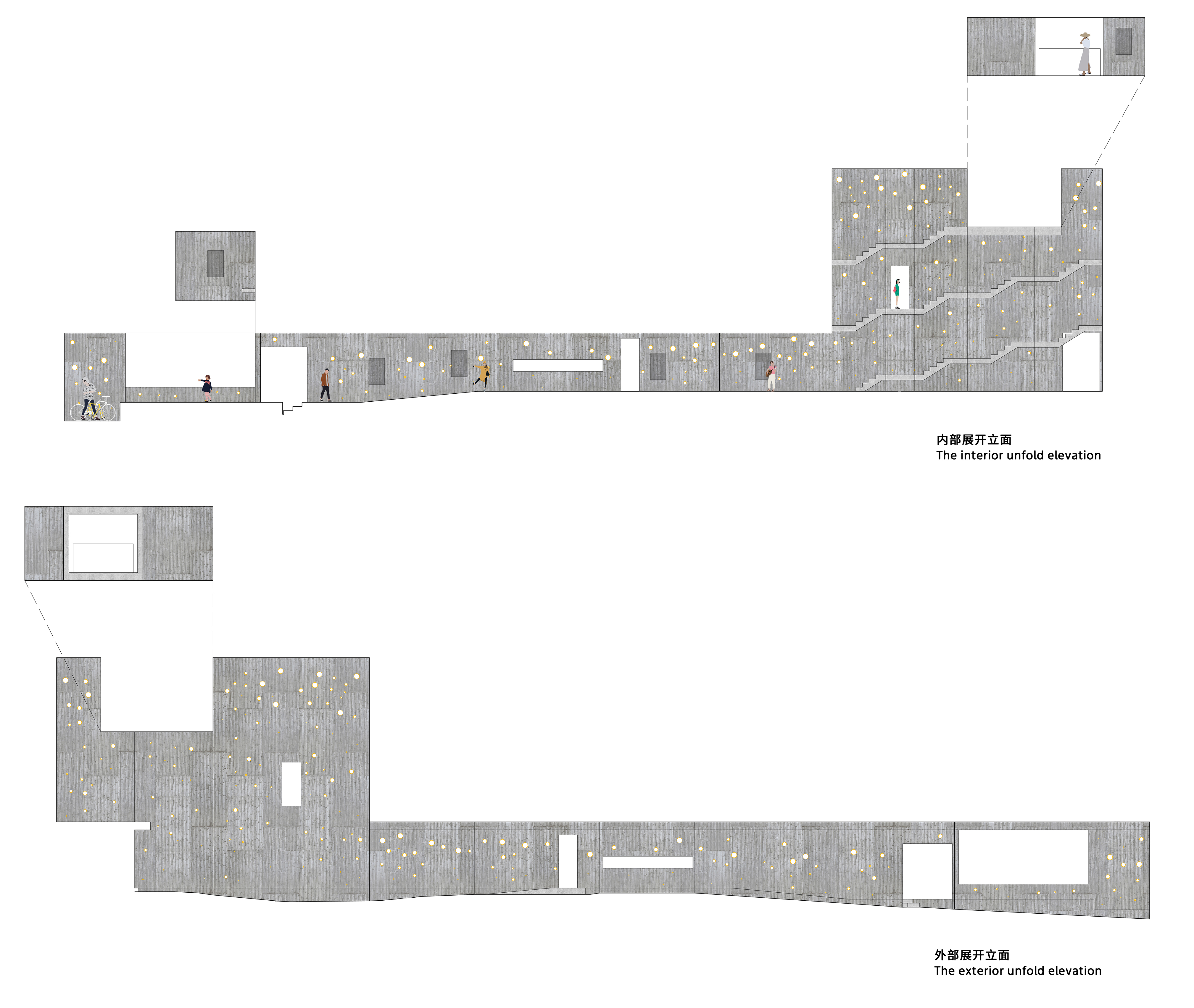
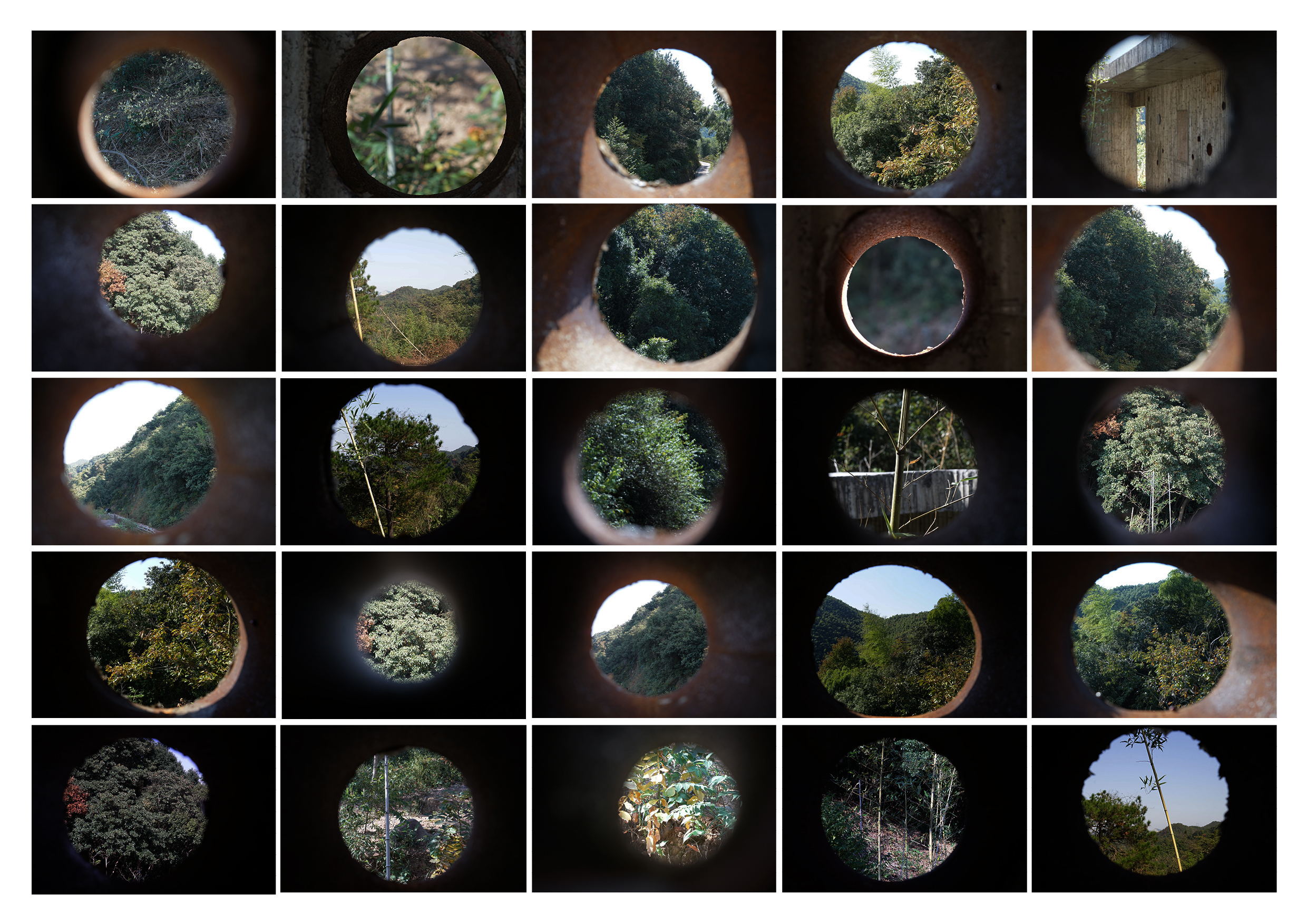


05
曲折片段
以上是我们从功能、体验、质感及视线等角度尽量还原了设计的过程,山顶驿站的设计还源于我们对园林的简单理解。如果把现存的中国园林简化成一个最简的模型,它便是一段旅程,一段迂回曲折的旅程,一段过程中随处有景的旅程,一段经历空间变化后可以坐看云起的旅程,园林将这一段段旅程编织成了一个个小世界。我们试着在山顶放一段迂回曲折的片段,等待人们来此经历这一段旅程。
Above is a recall of how we conceived the proposal from perspectives of function and use, experience, material and details, and views etc. The design also reflects our appreciation of the Chinese garden. If we could abstract the essence of all existing Chinese gardens, it would be a journey, a winding journey, a journey of constantly changing views, a journey on which people experience distinctive spaces and can enjoy rising clouds in the end. The Chinese garden weaves such journeys into tiny worlds. We tried to place such a zigzag fragment on the mountain top, waiting for people to come and experience the journey.
设计图纸 ▽


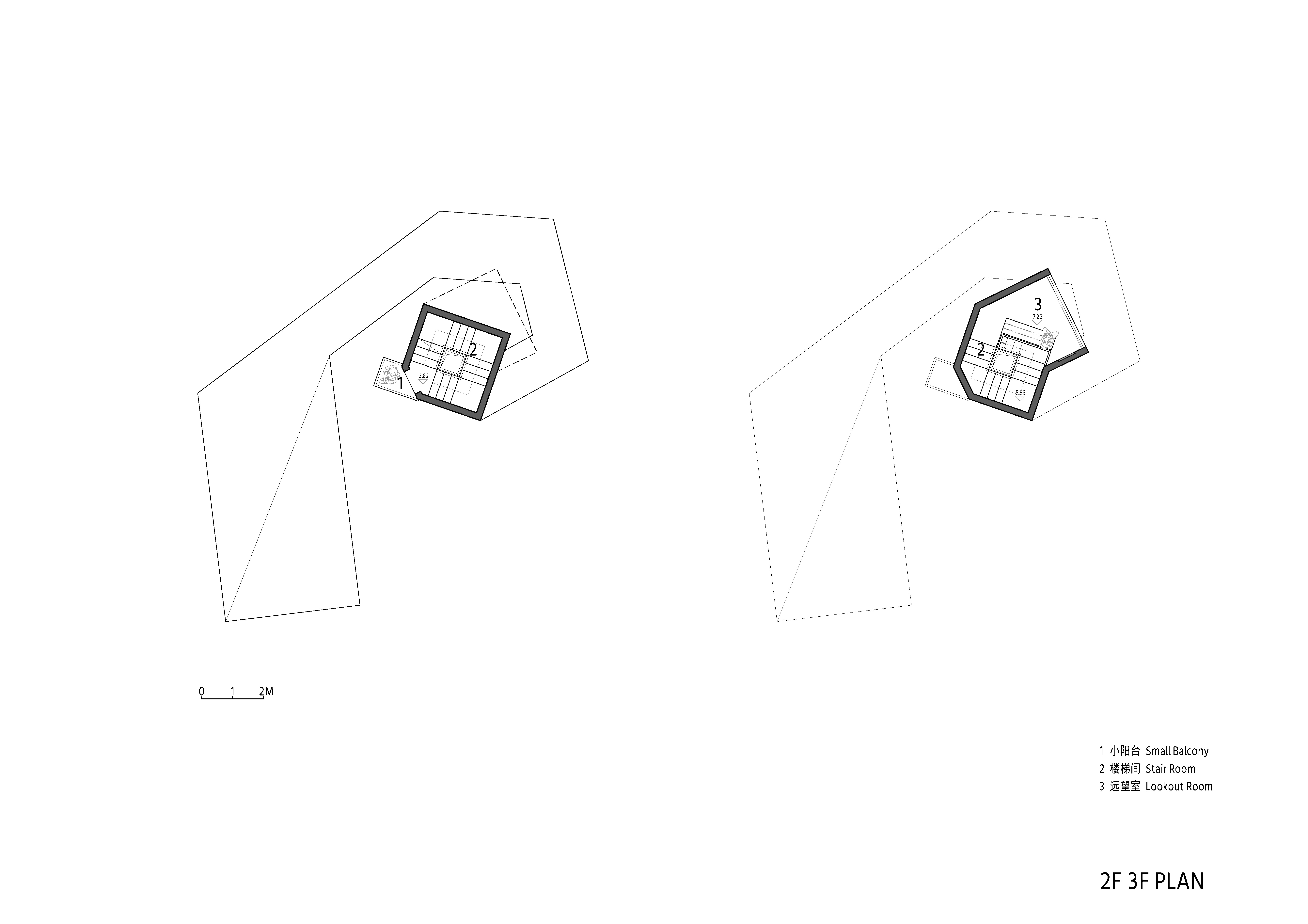
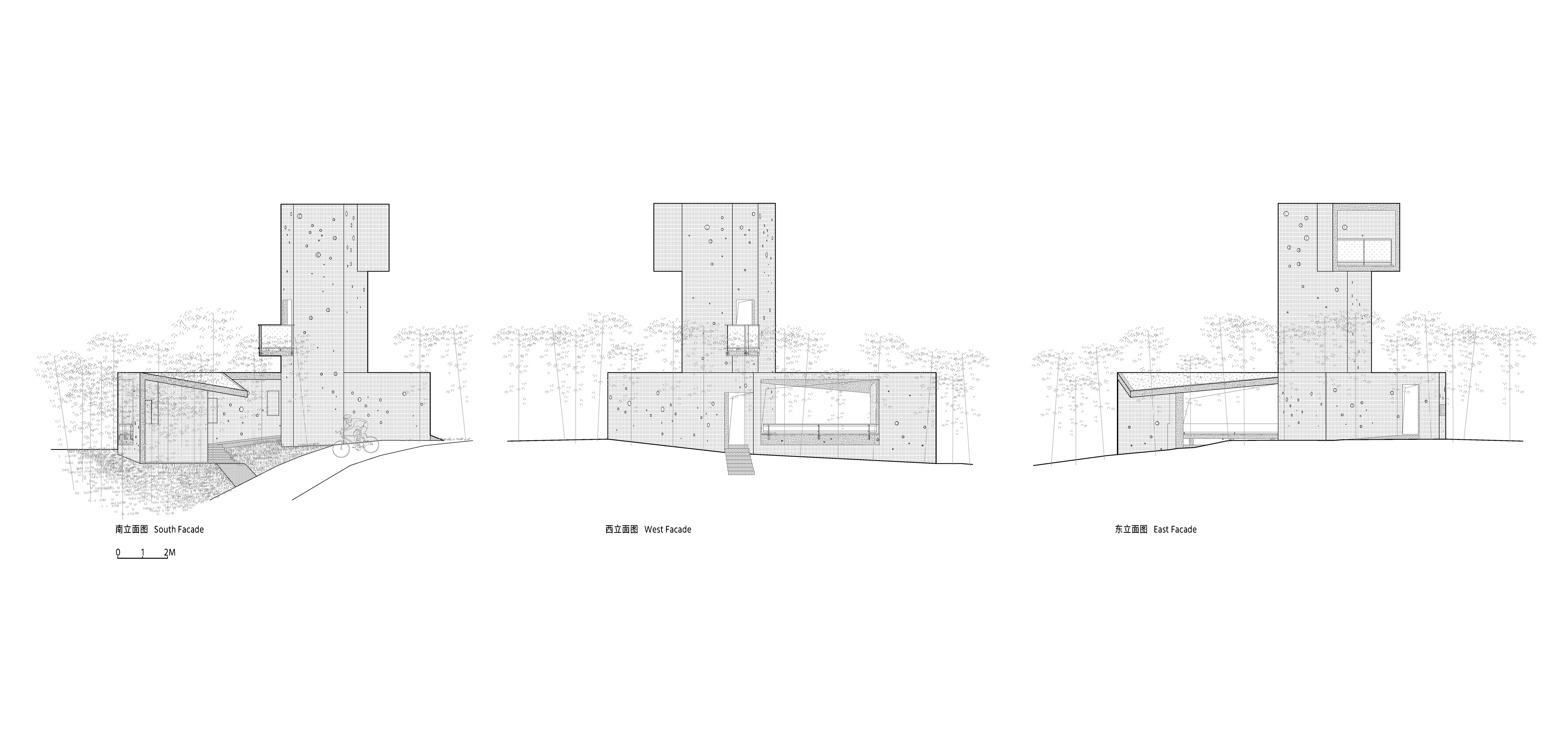
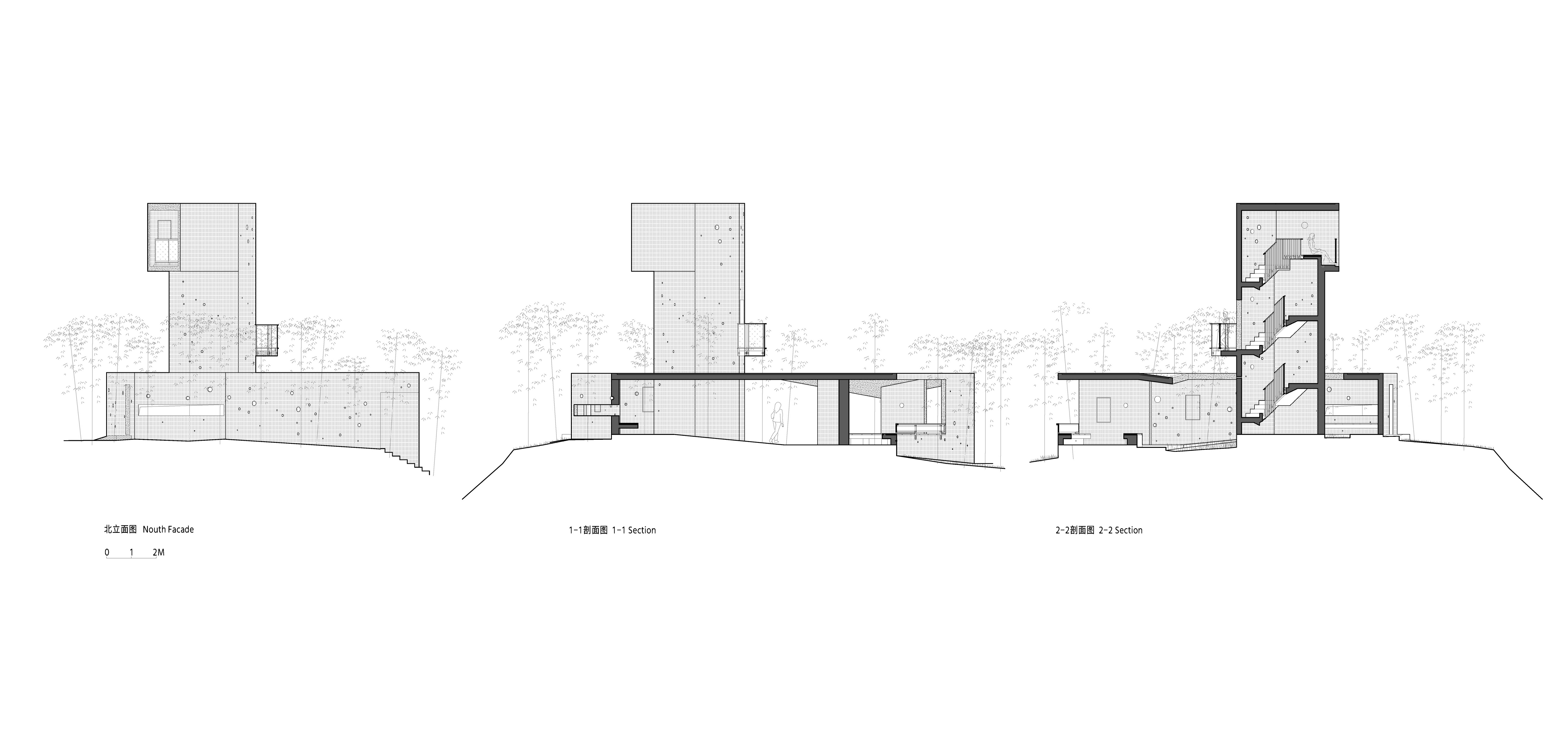
完整项目信息
项目名称:山顶驿站
项目类型:建筑
项目地点绍兴市上虞区长塘镇桃花源生态旅游区
设计单位:跳房子建筑工作室
主创建筑师:王田田、罗雅琴
业主:绍兴市上虞区长塘镇人民政府
建成状态:建成
设计时间:2020.03
建设时间:2021.11
建筑面积:90平方米
配合设计院:同创工程设计有限公司
结构设计:周建成
景区规划设计:尌林建筑设计事务所
施工方:绍兴市共创建设有限公司
监理方:绍兴市飞翔建设管理有限公司 丁志云
施工:绍兴市共创建设有限公司
材料:竹模混凝土、水刷石、锈钢管、实木等
摄影师:夏至、王田田
翻译:滑琪
版权声明:本文由跳房子建筑工作室授权发布。欢迎转发,禁止以有方编辑版本转载。
投稿邮箱:media@archiposition.com
上一篇:书山:绿瓦体育书店 / 大于建筑+不也设计工作室
下一篇:BIG竞赛获胜方案:Prisma大厦,深圳前海新地标